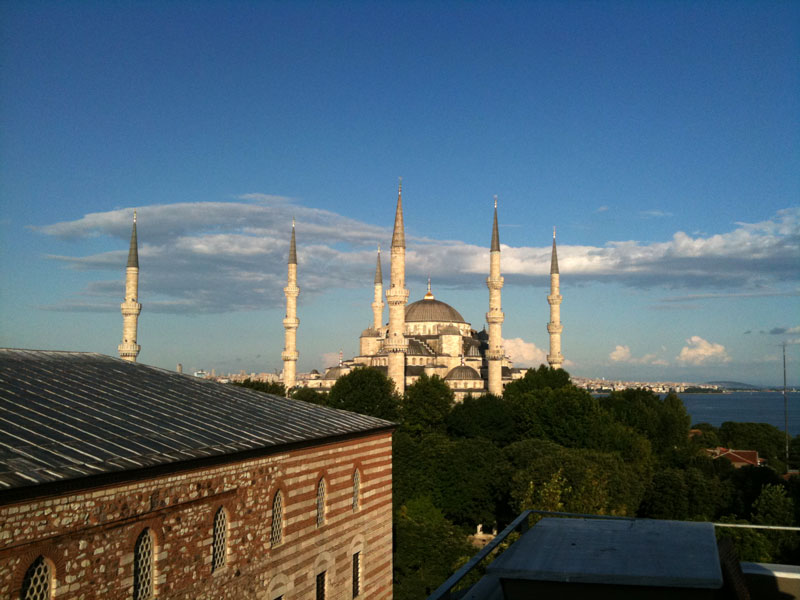One of the boutique hotels I stayed at in Istanbul was across the street from the Turkish and Islamic Arts Museum. We walked by it often in the first few days. The banner showed an exhibit of 17th – 19th century kilims. But it was closed on Monday. (I arrived on Sunday evening.) Tuesday afternoon, I ditched my friends and indulged in a long visit to the museum.
 The first exhibit I went to was the ethnography exhibit. The majority of the exhibit was about the nomadic life and rug making.
The first exhibit I went to was the ethnography exhibit. The majority of the exhibit was about the nomadic life and rug making.
Left is what the interior of the typical yurt. According to the plaque, it is the women’s responsibility to put the yurt together as soon as they make camp. It takes them about an hour to put the yurt together before they get started on their chores.
Huh? Chores? I’d be ready for a nap if I put that together in an hour after a full day of traveling. And what were the men doing?
 On the right is the frame for the top of the yurt. If I remember correctly, they put brush up against the outside of the lattice frame before covering it with carpets to shield them from the elements.
On the right is the frame for the top of the yurt. If I remember correctly, they put brush up against the outside of the lattice frame before covering it with carpets to shield them from the elements.
On to chores. The women would then settle down and get to the business of spinning wool and the weaving of rugs. (See gallery at the bottom of the page.)
There were a few things that struck me. First is that they really do use Turkish Spindles! Lots of them. There was a picture of a smallish spinning wheel that looks more like an upright charkha, but there were a lot of spindles. I assume that it was something they can do while they are on the move.
What was interesting is how they wound the spindles. It was up and over/under 2 arms, a la Amelia of The Bellwether, instead of the way I was originally taught (over 1, under 1), or a la Wanda (over 2, under 1). Of course, I don’t know if this is just the way the curators chose to wind and display the wool on the spindles or if this is really how the spinners really wind it on. However, as you can see in the gallery photos below, there were enough spindles in the display of various age to make me think that this might be authentic.
More on the actual Kilim exhibit later.
Click on any of the thumbnails to enlarge the photos. Click again on the new page for even larger photo.
24-Aug-2014: Sorry, I have removed the photo gallery because I have been getting a lot of comment spam through a loop hole in the WordPress Galleries created before a patch.

